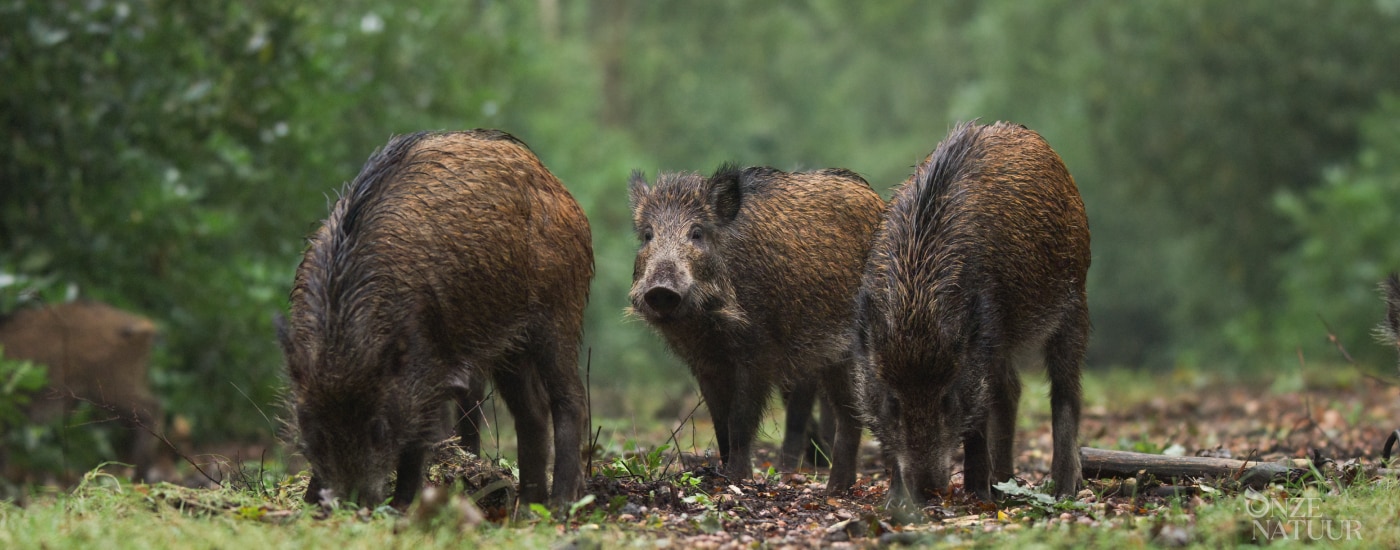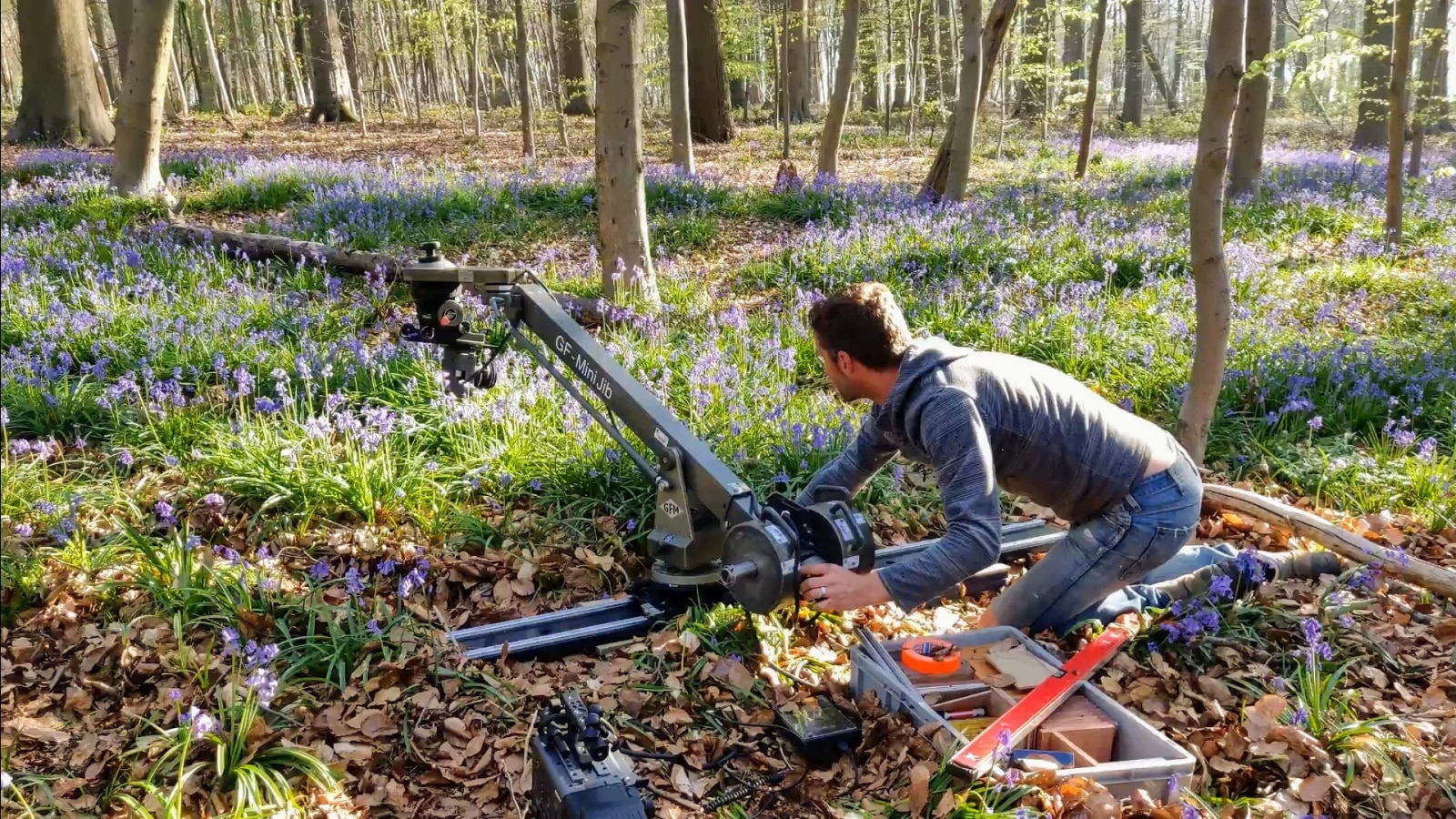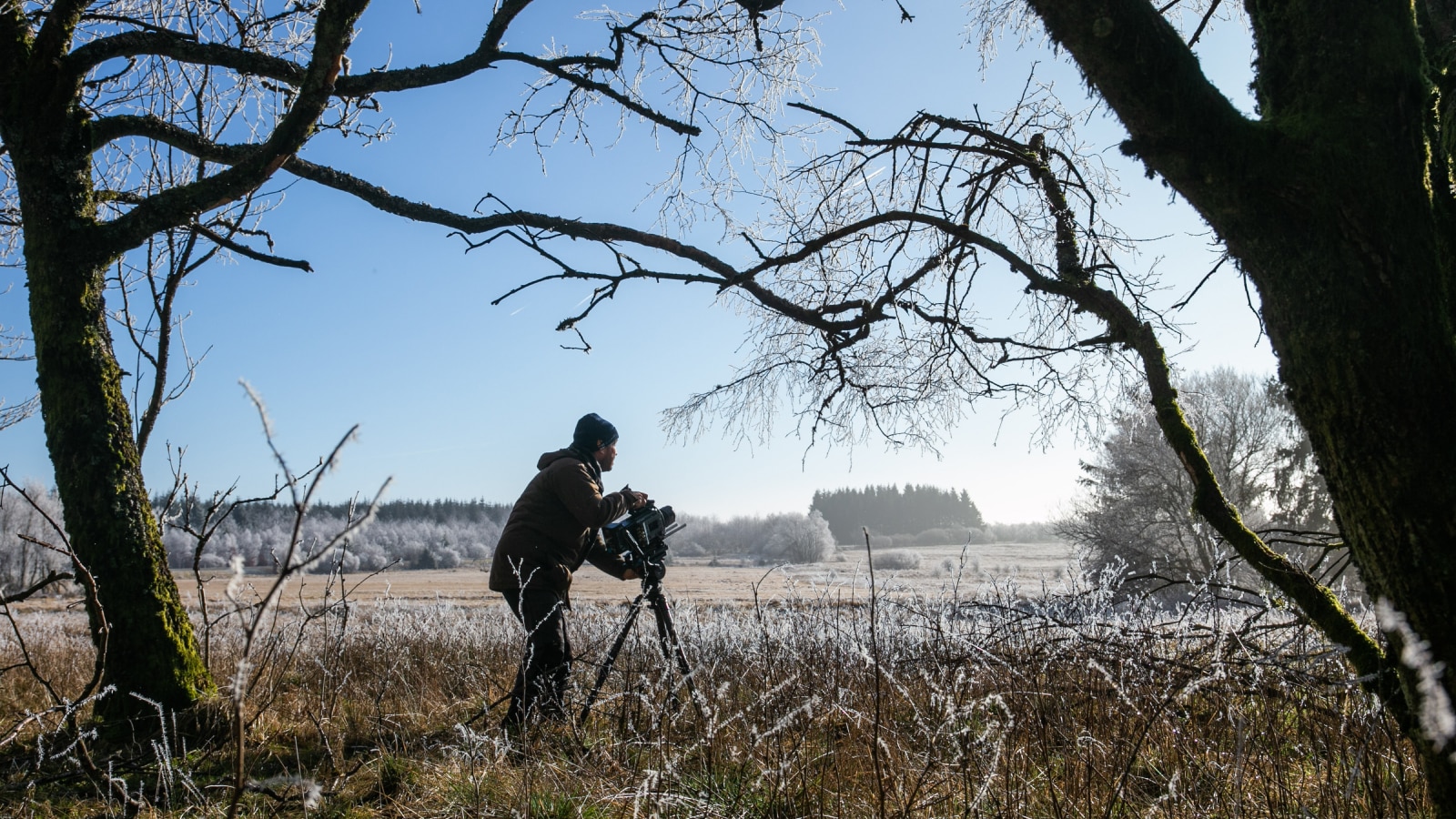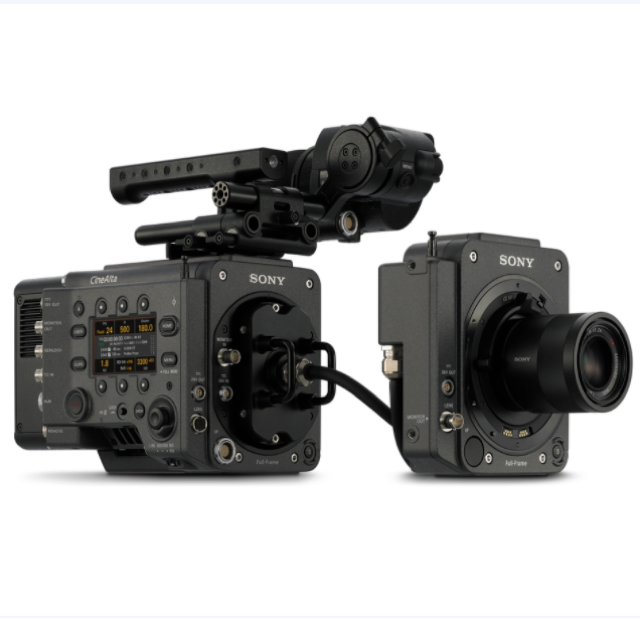Onze Natuur: a natural history epic shot in Belgium with Sony VENICE
Alister Chapman interviews cinematographers Dick Harrewijn and Pim Niesten.

Onze Natuur or “Our Nature” is a feature length film and a six-part TV series about wildlife in Belgium. It was shot on Sony VENICE cameras by wildlife specialists Pim Niesten and Dick Harrewijn.
How did you end up on this project?
Dick: “In the Netherlands there are typically a couple of full-length natural history films each year. I had worked on several of these, so the producers knew I could do the job. The project started as a television series but in the edit it was decided to also make an 85 min film for the cinema.”

Tell me about some of the challenges?
Dick: “It’s Belgium so it sounds easy and close to home. It isn’t somewhere that most people would consider filming to be difficult. But we had many of the same challenges as you might find in a more remote place. In winter, we filmed in snowstorms at -15c and in the summer we had extreme heat.”
Pim: “The weather in Belgium is very unpredictable… You prepare for one type of weather but then it changes and this makes it harder to plan.”

What cameras did you use?
Dick: “Each team had a Sony VENICE with the [CBK-3610XS VENICE Extension System], which I love by the way. These were the main cameras. We also had several A7SII’s at the beginning. These were switched to A7SIII’s when they came out.”
Why did you choose VENICE?
Dick: “I had used VENICE on my previous project, and I really liked the image and the way the camera works, and I like the way it’s built. But it wasn’t just down to me. I gave my preference to Olivier Struyven, (technical director for production company Hotel Hungaria), and they tested it and agreed that VENICE was the right choice.
“VENICE was for me the first camera to be close to being the ideal camera. For the cinema we must deliver in 4K; even someone without expert knowledge can see the difference that being able to shoot full frame at 6K brings. But still, the 4K super 35 looks amazing. For the scenic and panoramic shots, I used full frame cine lenses; for macro, we used full frame macro lenses. But for telephoto shots, it’s much easier if you have a super 35mm sensor. Being able to switch between full-frame and super 35 at the touch of a button is amazing.

VENICE was for me the first camera to be close to being the ideal camera. For the cinema, we must deliver in 4K; even someone without expert knowledge can see the difference that being able to shoot full frame at 6K brings… Being able to switch between full-frame and super 35 at the touch of a button is amazing.
Dick Harrewijn

Was there anything about VENICE that really helped this shoot?
Pim: “I love really nice, fixed shots, but I also love being able to use a moving shot to reveal something, moving the camera can add to the emotion of a shot or make a shot more dynamic. So, I like to use a jib, but a jib can be heavy. For the field, I wanted to use a pocket jib as well as a skater dolly and the only camera that suited this setup was the VENICE with the extension kit. This meant I could make the camera head very small and get those jib shots that I want.
“For wildlife, the dual ISO function in the Sony VENICE makes a big difference. Often, we are filming late in the day or early in the morning and you have enough light up to a point but then it gets dark and often the animal behavior changes. So being able to use the dual ISO was a real advantage.
“Initially, when I use a new camera, I will compare it to other cameras I have used and sometimes you go – maybe I preferred this or that, but with the VENICE it exceeded my expectations. After a while, I stopped comparing it and it just feels really good. Also, it’s so reliable, I can’t remember any issues and we filmed from damp and icy cold to hot summer and we never had any issues.”

What were the most challenging shots for you?
Pim: “Every step, every shot is a challenge; we have elaborate equipment, we are filming animals that we can’t control and we have to be in the right spot at the right time and with the right equipment. And that doesn’t just mean the latest or greatest equipment but making sure you don’t forget anything – as you will often be somewhere very remote. You must be organized. One missing cable could mean you lose an entire day of filming. One little mistake can be very costly.”

Dick: “That’s a tough question because there are all sorts of challenges. There is a shot of a young Osprey hunting fish. It took us 10 days to get the shot because sometimes the bird would be too far away, sometimes she wouldn’t catch a fish. Eventually after 10 days we got the shot.”
And what were your favorite shots?
Dick: “There’s a few that stand out but especially one, which was the arrival of the cranes. In autumn, they travel south from Germany to France. If the winds are difficult, they will stop in Belgium for one night. The conditions in Germany looked right for them to leave, but we spent almost two weeks waiting. Finally, they left on a Sunday morning and that evening some landed in moorland in Belgium. We used the cover of night to get close to them, slowly creeping to where I thought they might be. Eventually, in the early morning light, I could see that there were a few of them, then a few more, then thousands of them! I was right in the middle of the flock, and they were calling to each other, completely unaware that I was there. It was an amazing experience, filming them waking up before they took off in the thousands to continue their journey.

And Pim your favorite?
One sequence I’m really proud of is the hatching of tiny lizard eggs. First, we filmed the lizard eggs in the studio. I wanted to have the feeling of the camera moving around the eggs in a dynamic way as they hatched. To achieve this, we built a rotating set with lighting to match the real world. We didn’t know when the eggs would hatch, so we had to watch them constantly for several days. My assistant slept next to the incubator for a week and then when it looked like they were ready it took another two days to get the shot. Then we had to go to the railway tracks AND film the lizards emerging from under the rocks. I’m really proud of the way it looks, we captured the first crack in the eggs all the way to the lizards leaving the rocks and it doesn’t need words or a commentary.”

What would be your advice for someone thinking of doing what you do?
Dick: “Filming natural history is a specialty, it’s not just about learning how to use a telephoto lens, it’s about understanding and anticipating what the animal is going to do, where it will be. It’s about how to camouflage yourself and how to blend into the landscape. It’s very rewarding but I’ve slept in the field in a hide for days just be close to the animals.”
Pim: “The most important thing is to get on with people. You will be out in the wild in challenging conditions with a small team, so you must get on with people. You need to be able to invent creative ways to tell a story and then combine that with the equipment you have to make something really interesting. But also, as a wildlife filmmaker you need to know your subject, to have a passion for it and that’s not something you can learn, you either have it or you don’t.”
I’d really like to thank Dick and Pim for taking the time to talk to me. I wish them both luck and look forward to seeing more of their beautiful footage.



